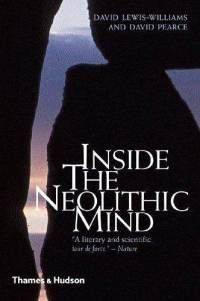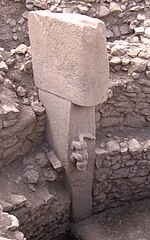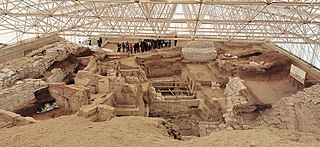
Çatalhöyük is a tell of a very large Neolithic and Chalcolithic proto-city settlement in southern Anatolia, which existed from approximately 7500 BC to 6400 BC and flourished around 7000 BC. In July 2012, it was inscribed as a UNESCO World Heritage Site.

Shamanism or samanism is a religious practice that involves a practitioner interacting with the spirit world through altered states of consciousness, such as trance. The goal of this is usually to direct spirits or spiritual energies into the physical world for the purpose of healing, divination, or to aid human beings in some other way.
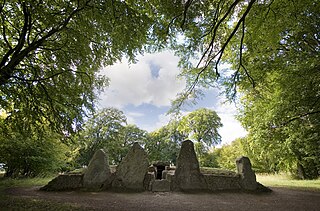
Long barrows are a style of monument constructed across Western Europe in the fifth and fourth millennia BCE, during the Early Neolithic period. Typically constructed from earth and either timber or stone, those using the latter material represent the oldest widespread tradition of stone construction in the world. Around 40,000 long barrows survive today.

The Newgrange cursus is a Neolithic monument used as a ceremonial procession route within the Brú na Bóinne complex. The ancient trackway is 100m long and 20m wide. It is located at Newgrange, in County Meath, Ireland.
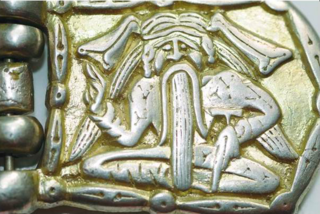
Hungarian mythology includes the myths, legends, folk tales, fairy tales and gods of the Hungarians, also known as the Magyarok.

In archaeology, the term entoptic phenomena relates to visual experiences derived from within the eye or brain. In this respect they differ slightly from the medical definition, which defines entoptic phenomena as only applying to sources within the eye, not the brain. To avoid this confusion, the term subjective visual phenomena is sometimes used. Entoptic was chosen by author David Lewis-Williams due to its origin from Greek meaning "coming from within".

James David Lewis-Williams is a South African archaeologist. He is best known for his research on southern African San (Bushmen) rock art. He is the founder and previous director of the Rock Art Research Institute and is currently professor emeritus of cognitive archaeology at the University of the Witwatersrand (WITS).

Ruth Tringham is an anthropologist, focusing on the archaeology of Neolithic Europe and southwest Asia. She is a Professor of the Graduate School (Anthropology) at the University of California, Berkeley and Creative Director and President of the Center for Digital Archaeology (CoDA), a recently established non-profit organization. Before going to Berkeley, she taught at Harvard University and University College London. Tringham is probably best known for her work at Selevac (1976–1979) and Opovo (1983–1989), Serbia, at the Eneolithic tell settlement of Podgoritsa, Bulgaria (1995), and at the well-known site of Çatalhöyük (1997-), Turkey.

Jean Clottes is a prominent French prehistorian. He was born in the French Pyrenees in 1933 and began to study archaeology in 1959, while teaching high school. He initially focused on Neolithic dolmens, which were the topic of his 1975 Ph.D. thesis at the University of Toulouse. After being appointed director of prehistoric antiquities for the Midi-Pyrénées in 1971, he began to study prehistoric cave art in order to fulfill the responsibilities of that position. In the following years he led a series of excavations of prehistoric sites in the region. In 1992, he was named General Inspector for Archaeology at the French Ministry of Culture; in 1993 he was appointed Scientific Advisor for prehistoric rock art at the French Ministry of Culture. He formally retired in 1999, but remains an active contributor to the field.
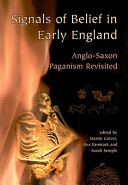
Signals of Belief in Early England: Anglo-Saxon Paganism Revisited is an academic anthology edited by the British archaeologists Martin Carver, Alex Sanmark and Sarah Semple which was first published by Oxbow Books in 2010. Containing nine separate papers produced by various scholars working in the fields of Anglo-Saxon archaeology and Anglo-Saxon history, the book presents a number of new perspectives on Anglo-Saxon paganism and, to a lesser extent, early Anglo-Saxon Christianity. The collection – published in honour of the archaeologist Audrey Meaney – was put together on the basis of a conference on "Paganism and Popular Practice" held at the University of Oxford in 2005.

The Viking Way: Religion and War in Late Iron Age Scandinavia is an archaeological study of old Norse religion in Late Iron Age-Scandinavia. It was written by the English archaeologist Neil Price, then a professor at the University of Aberdeen, and first published by the Department of Archaeology and Ancient History at Uppsala University in 2002. A revised second edition is due to be published in 2017 by Oxbow Books.

The Mind in the Cave: Consciousness and the Origins of Art is a 2002 study of Upper Palaeolithic European rock art written by the archaeologist David Lewis-Williams, then a professor at the University of the Witwatersrand in Johannesburg, South Africa.
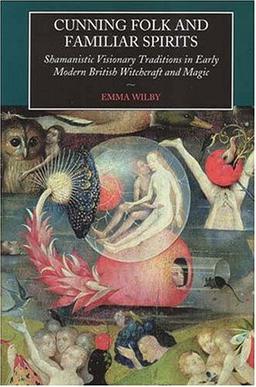
Cunning Folk and Familiar Spirits: Shamanistic Visionary Traditions in Early Modern British Witchcraft and Magic is a study of the beliefs regarding witchcraft and magic in Early Modern Britain written by the British historian Emma Wilby. First published by Sussex Academic Press in 2003, the book presented Wilby's theory that the beliefs regarding familiar spirits found among magical practitioners – both benevolent cunning folk and malevolent witches – reflected evidence for a general folk belief in these beings, which stemmed from a pre-Christian visionary tradition.
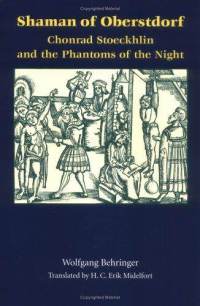
Shaman of Oberstdorf: Chonrad Stoeckhlin and the Phantoms of the Night is a study of the arrest and trial of Chonrad Stoecklin (1549–1587), a German herdsman from the town of Oberstdorf who was accused and executed for the crime of witchcraft after experiencing a series of visions. Written by the German historian Wolfgang Behringer, himself a specialist in the Early Modern witch trials of Germany, Shaman of Oberstdorf was initially published in German as Chonrad Stoekhlin und die Nachtschar: Eine Geschichte aus der frühen Neuzeit by R. Piper GmbH & Co. in 1994. It was subsequently translated into English by H.C. Erik Midelfort and published in 1998 by the University of Virginia Press.

Dreamtime: Concerning the Boundary between Wilderness and Civilization is an anthropological and philosophical study of the altered states of consciousness found in shamanism and European witchcraft written by German anthropologist Hans Peter Duerr. First published in 1978 by Syndikat Autoren-und Verlagsgesellschaft under the German title of Traumzeit: Über die Grenze zwischen Wildnis und Zivilisation, it was translated into English by the Hungarian-American anthropologist Felicitas Goodman and published by Basil Blackwell in 1985.

Shamans: Siberian Spirituality and the Western Imagination is a historical study of how westerners have viewed the shamans of Siberia. It was written by the English historian Ronald Hutton, then working at the University of Bristol, and first published by Hambledon and London in 2001. Prior to writing Shamans, Hutton had authored a series of books on such subjects as Early Modern Britain, pre-Christian religion, British folklore and Contemporary Paganism.

In the Neolithic and Bronze Age British Isles, rock art was produced across various parts of the islands. Petroglyphic in nature, the majority of such carvings are abstract in design, usually cup and ring marks, although examples of spirals or figurative depictions of weaponry are also known. Only one form of rock art in Europe, this late prehistoric tradition had connections with others along Atlantic Europe, particularly in Galicia.

The Cave of the Beasts is a huge natural rock shelter in the Western Desert of Egypt featuring Neolithic rock paintings, more than 7,000 years old, with about 5,000 figures.
Michael Balter is an American science journalist. His writings primarily cover anthropology, archaeology, mental health and sexual harassment in science.

Prehistoric religion is the religious practice of prehistoric cultures. Prehistory, the period before written records, makes up the bulk of human experience; over 99% of human experience occurred during the Paleolithic period alone. Prehistoric cultures spanned the globe and existed for over two and a half million years; their religious practices were many and varied, and the study of them is difficult due to the lack of written records describing the details of their faiths.
